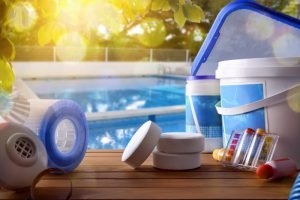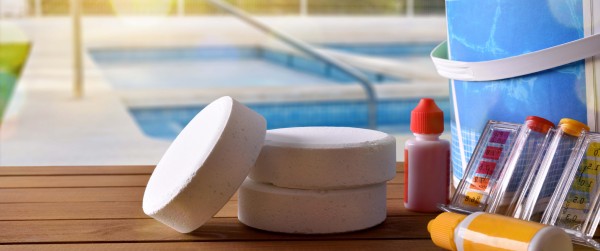One of the keys to clean pool water is by shocking it. This should be a part of your maintenance routine; failing to do this at least once a week can result in bacteria and algae build-up. When there are no shock treatments, the water can be hazardous, green, and uninviting to the swimmers.
The word shocking will mean that you have to add a lot of chlorine to your swimming pool to destroy the water’s bacteria, chloramines, and other contaminants. This is a process that adds 10x of chlorine that will reach the water’s breakpoint chlorination in parts per million. It’s also part of the sanitation process since it will remove the build-up of urine, oil, sweat, and other bodily fluids in the water.
When Do You Need to Apply the Shock?
After a party or an event where there’s heavy usage of the pool, the owners must make an effort to shock the pool to prevent various medical issues, skin irritation, unpleasant odors, and red eyes. When combined with multiple disinfectants, the pool chemicals, and liquid pool shock effectively remove contaminants and lotions from the water. Here are certain situations when you might want to consider these treatments:
- After the completion of the new pool, when the water is still fresh from its source
- When you’re just re-opening the swimming pool area after a long winter season
- If a party has been held on the weekend and there were a lot of swimmers
- When the spa temperatures are always warm because of the consistent exposure to the sun
- After a very heavy rainfall where a lot of organic matter has fallen on the surface
Granular vs. Liquid
When shopping for shock treatment, you might face the liquid and granular types of shock. The liquid type is more concentrated, but it has some similarities with the granules. Both are efficient in clearing cloudy water, killing microorganisms, and controlling algae.
Liquid Types
- More affordable, and you can save 70% than the granules
- They are very popular with homeowners and commercial pool owners alike
- Their containers can be refilled
- There are no residues and no scaling involved
Granular Types
- They can dissolve fast
- You can carry them easily
- Storage can be for long periods of time
Different Types of Shock
- Calcium Hypoclorite: Many professionals refer to calcium hypochlorite shock as just cal-hypo, which is generally used as a disinfectant of the water from municipalities. It’s very convenient and considered to be the most affordable option for shocking the pool. This is a very popular method that’s fast-acting, but this can be unstable. Its instability will cause it to burn quickly from the sun’s ultraviolet rays, so it’s best to apply it at night. Avoid damaging the sides of the pool by pre-dissolving the calcium hypochlorite in water, and only swim in the pool once it returns to a more stable chlorine level. See an overview of calcium hypochlorite in this link here.
- Sodium Dichlor: This is called dichloroisocyanuric acid, and this can dissolve slowly. Unlike the first one, which is cal-hypo, you can expect this treatment to increase the cyanuric acid levels in the water. Generally, you’ll expect the pH levels to rise as well; this is where dichlor acts as an oxidizer and sanitizer. It’s recommended to use 1 pound of dichlor for every 10,000 gallons, and generally, this is ideally added after the sun sets. However, some might not recommend this as their ideal shock treatment because it tends to raise the cyanuric acid levels in the water.
- Potassium Monopersulfate: There are shock solutions that don’t contain chlorine, and one of them is potassium monopersulfate. This treatment is based on oxygen, and this is specifically designed to eliminate bacteria, destroy contaminants, and oxidize the water to help the regular chlorine’s operation. Unlike the two previous treatments, which were dichlor and cal-hypo, you don’t have to wait long before you can start swimming. You can apply this, and after just about 20 minutes, you can start swimming in the water. This can be added at any time of the day and can be a quick-acting solution. See files about the potassium monopersulfate when you click this: https://solutionslimpides.com/pdfdoc/potassium-monpersulfate-k2hso5.pdf
- Liquid or Bleach Shock: Sodium hypochlorite is the liquid or bleach shock and is typically heavy-duty. This isn’t generally found in residential pools. This does not need any preparations, and it’s quick-acting. It can dissolve fast, and it’s delivered by trucks. Generally, they are the preferred treatments of condos, hotels, and other big clubs in cities. They are also popular with dry cleaners and laundry companies since they have stronger concentrations. When you choose one for your spa or pool, you need to select the ones which contain unaltered, unscented, and regular bleach for safety. You need to achieve healthy and clean water quality in your pool, which can be achievable with the right shock. Make sure to do your research and get the ones from trusted manufacturers for the best results.

